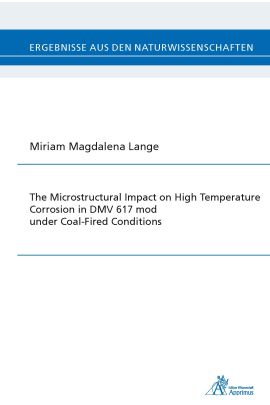Nickel-based materials are applied in the next generation of advanced super critical coal power plants. This next generation shows a better efficiency by using a higher operating temperature of 700 °C compared to 600 °C in conventional coal power plants. However, new materials need to be developed for the power plant construction which can withstand this increased temperature under combustion gases. In this study, the new developed nickel-based alloy DMV 617 mod was investigated. In particular, the high temperature behavior under real sulfidation atmosphere was studied for long term application for the two temperatures 664 °C and 704 °C, respectively. DMV 617 mod is a variation of the alloy 617 by adding boron. In previous studies it was found that boron improves the mechanical properties of the alloy. However, the influence of boron on the sulfidation behavior is unknown. To study this behavior Ni-Cr model alloys with carbon and boron were investigated in addition to the exposed DMV 617 mod. Both, exposed samples of DMV 617 mod and model alloys, were studied with respect to their corrosion side and their microstructure. The microstructures of DMV 617 mod differ after long term annealing for the two temperatures. The precipitates in the grains and at the grain boundaries of the 664 °C exposed material, for example γ‘, M23C6 and M6C, are larger than the respective precipitates of the 704 °C exposed material. These results correspond directly to the results of the corrosion behavior. Detailed analysis of the sulfidation products showed that large Ni3±xS2 products are formed along the grain boundaries for 664 °C exposed material, which were not found for 704 °C exposed material. Ni3±xS2 and nickel can form an eutectic phase if the quantity of nickel is high enough as in the γ‘. Thus, the high ratio of γ‘ along the grain boundary facilitates an easy pathway for the eutectic phase and to an accelerated corrosion rate for the 664 °C exposed material. The effect of boron was investigated by means of model alloys. The carbides in the alloys are sulfidized preferentially. However, added boron hinders the sulfidation of the carbides. To sum up, the sulfidation rate is higher for 664 °C compared to 704 °C exposed DMV 617 mod, which is caused by the coarsening of the γ‘ phase at the lower temperature. Added boron has a beneficial effect on the sulfidation resistance.
| Autor | Lange, Miriam Magdalena |
|---|---|
| Lieferzeit | 3-4 Tage |
| Gewicht | 0.195 kg |
| Erscheinungsdatum | 16.02.2017 |
Ergebnisse aus den Naturwissenschaften
The Microstructural Impact on High Temperature Corrosion in DMV 617 mod under Coal-Fired Conditions
Kurzbeschreibung
Nickel-based materials are applied in the next generation of advanced super critical coal power plants. This next generation shows a better efficiency by using a higher operating temperature of 700 °C compared to 600 °C in conventional coal power plants. However, new materials need to be developed for the power plant construction which can withstand this increased temperature under combustion gases. In this study, the new developed nickel-based alloy DMV 617 mod was investigated.

